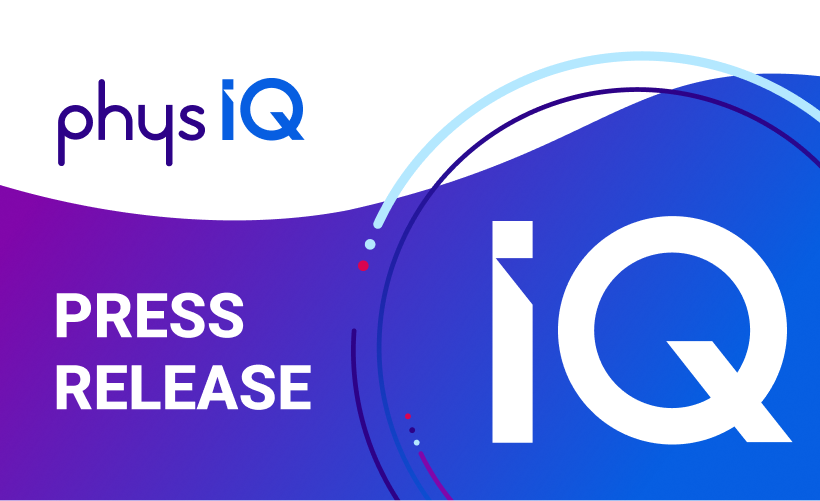Inside an Individual’s Physiological Signature
Originally published in Medical Device & Technology
5 min read
![]() physIQ
:
February 13, 2015
physIQ
:
February 13, 2015

SAN DIEGO –February 13, 2015 – Scripps Translational Science Institute will lead a consortium of four partners to develop a program to improve health outcomes for Ebola patients, increase the safety of health care workers and reduce the risk of spreading the virus to others.
The program, dubbed STAMP2, short for Sensor Technology and Analytics to Monitor, Predict and Protect Ebola Patients, will test in a new “precision medicine” approach using wearable, wireless health sensors, a wireless vital signs monitoring platform and advanced analytics technology to monitor and analyze multiple vital signs of patients either suspected or confirmed to be infected with the Ebola virus.
The program was nominated for a grant from the U.S. Agency for International Development. The grant is part of a new program called Fighting Ebola: A Grand Challenge for Development, led by USAID in collaboration with the White House Office of Science and Technology, the Centers for Disease Control and Prevention, the Department of Defense and field experts to help health care workers provide better care.
STAMP2 represents a potential solution to current shortcomings in the management of Ebola patients by targeting an opportunity for earlier interventions and minimizing spread of the virus. The existing approach for monitoring patients suspected of an infection detects the infection only after a patient has become contagious and the virus has the opportunity to spread. Continuous monitoring of multiple vital signs, coupled with sophisticated, personalized data analytics, can lead to much earlier warning and with it, earlier intervention. For patients confirmed to be infected, continuous monitoring of multiple vital signals can detect important changes in health status immediately.
“The new approach will provide unprecedented visibility into a patient’s physiology that we believe will be invaluable in improving care in minimizing risk of exposure during an Ebola virus outbreak,” said Steven Steinhubl, M.D., director of digital medicine at Scripps Health. “This will open the door to being able to identify warning signs very early on, when potentially lifesaving care can be provided.”
Patient data will be collected using two innovative wireless monitors that will continuously and remotely monitor and transmit multiple vital signs. By incorporating the ViSi Mobile System from Sotera Wireless and a Band Aid-type sensor — the MultiSense device from Rhythm Diagnostic Systems — into systems of care, patients will be able to be monitored at all times, so that changes in their condition can be recognized sooner, and without needless exposure to health care workers.
Data from the monitors will be transmitted wirelessly to a personalized physiology analytics (PPA) platform developed by physIQ, which will use advanced machine learning algorithms to detect subtle changes in a patient’s physiological profile over time, compared to the patient’s physiological baseline. The PPA will also provide automated analysis, actionable information and guidance to clinical staff for multiple patients simultaneously. This offers the opportunity to detect and act upon changes in a patient’s health status in real time, well before symptoms develop or conditions worsen.
According to the Centers for Disease Control and Prevention, the 2014 Ebola epidemic is the largest such outbreak in history, affecting multiple countries in West Africa, with more than 13,000 confirmed cases and more than 9,000 deaths. Plans to develop, validate, refine and field test the STAMP2 program are currently under way. Following the completion of these processes, it is expected that a fully functioning turnkey STAMP2 system would be made available for deployment. As currently envisioned, the system would include an appropriately scaled supply of ViSi Mobile and MultiSense wireless health monitoring devices, wireless rugged computers and smartphones and tablets with specially created apps.
Joining STSI in the new program are wireless vital signs monitor developer Sotera Wireless, Inc., wireless health sensor developer Rhythm Diagnostic Systems, and personalized predictive analytics technology company physIQ.
Sotera Wireless, Inc. is a San Diego-based medical device company dedicated to the development, marketing and sale of a new generation of comprehensive vital signs monitoring. Sotera’s mission is to improve patient safety by empowering clinicians to detect early signs of deterioration in virtually any care setting and enable early intervention and rapid response, all without limiting the patient’s freedom of movement. Sotera’s ViSi Mobile System is a platform for comprehensive vital signs monitoring that is designed to keep clinicians connected to their patients. ViSi Mobile is able to measure and display core vital signs (non-invasive blood pressure, heart rate, pulse rate, respiratory rate, skin temperature, oxygen saturation and electrocardiogram), with monitoring accuracy and resolution typically found in intensive care units, plus motion and posture. More information on the company or its ViSi Mobile System can be obtained at soterawireless.com or by sending an email to info@soterawireless.com. Sotera® and ViSi® are registered trademarks of Sotera Wireless, Inc.
Rhythm Diagnostic Systems is focused on developing and manufacturing a family of proprietary, wearable, small, unobtrusive, Band Aid-like strips, each capable of detecting simultaneously, and recording or transmitting, up to nine different physiological parameters. In this way, single, wireless strips can be tailored to detect and report just those parameters relevant to a particular disorder or study. Strips tailored to monitor various aspects of cardiac, cardiopulmonary, and sleep disorders are currently in clinical and other trials. These MultiSenseâ„¢ strips, weighing less than 10 grams, integrate not only the ability to detect and measure any and all of these parameters, but also connectivity via direct reading of flash memory or low power Bluetooth. Rhythm Diagnostic Systems is based in the San Francisco Bay Area. More information on the company and the MultiSense strips can be obtained at www.rhythmdiagnostics.com, or by email to info@rhythmdiag.com.
Based in Naperville, Ill., physIQ is a company dedicated to making a difference in people’s lives through its proprietary personalized physiology analytics technology. physIQ is a proven, first-of-its-kind data analytics platform designed to process multiple vital signs from wearable sensors to create a personalized normal baseline for each individual. By mapping personal physiology this way, we can then monitor and detect clinically significant departures from the norm to enable timely corrective action for patients. With applications in both the regulated healthcare and consumer health and fitness markets, physIQ is bringing the same technology used to monitor complex systems like jet aircraft engines to human health.
Part of the San Diego, Calif.-based Scripps Health, the Scripps Translational Science Institute (STSI) is a unique community collaboration that embraces precision medicine by initiating research to move basic science from the lab to the patient bedside. STSI is supported by the National Institutes of Health flagship program, Clinical and Translational Science Award, awarded to The Scripps Research Institute in conjunction with its collaboration with STSI. The San Diego Supercomputer Center also is a collaborator in the STSI consortium. More information can be found at www.stsiweb.org.
Founded in 1924 by philanthropist Ellen Browning Scripps, Scripps Health is a nonprofit integrated health system based in San Diego, Calif. Scripps treats a half-million patients annually through the dedication of 2,600 affiliated physicians and 13,750 employees among its five acute-care hospital campuses, hospice and home health care services, and an ambulatory care network of physician offices and 25 outpatient centers and clinics.
Recognized as a leader in the prevention, diagnosis and treatment of disease, Scripps is also at the forefront of clinical research, genomic medicine and wireless health care. With three highly respected graduate medical education programs, Scripps is a longstanding member of the Association of American Medical Colleges. In 2014, Truven Health Analytics named Scripps one of the top five large health systems in the nation for the third year, and Scripps hospitals are consistently ranked by U.S. News & World Report among the nation’s best. Scripps is regularly recognized by Fortune, Working Mother magazine and AARP as one of the best places in the nation to work. More information can be found at www.scripps.org.
Scripps Health
Steve Carpowich
858-356-7476
Carpowich.stephen@scrippshealth.org
Sotera Wireless
Mary Savoy, RN
858-373-4866
Mary.savoy@soterawireless.com
Rhythm Diagnostic Systems, Inc.
Jeff Marshall
650-260-5849
info@rhythmdiag.com
physIQ
Jodi Perkins, OUTLOOK Marketing Services, Inc.
847-279-0882
Jodi@outlookmarketingsrv.com

Originally published in Medical Device & Technology

Originally published in Pixel Scientia Labs

Originally published in Crain's Chicago